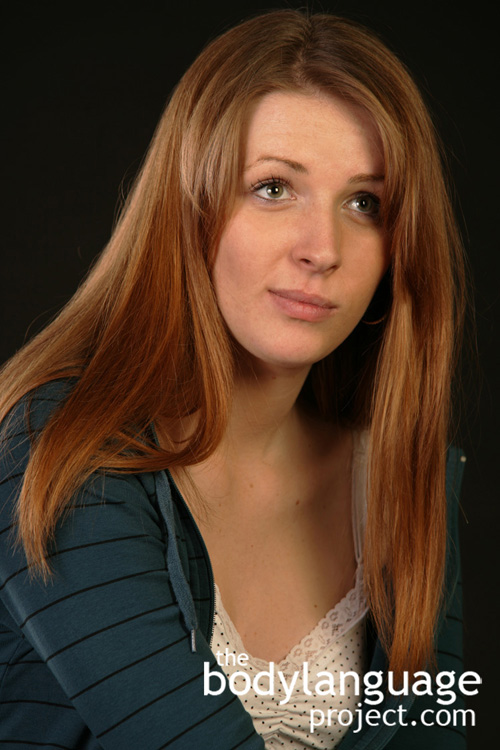
Microexpressions, such as this furrowed forehead (a negative thought indicator) are called “leaked” because they happen quickly and last only fractions of a second before disappearing. Because they are difficult to control, they tend to be reliable indicators of truly felt emotions.
Microexpressions are facial movements or expressions that flash across the face at such a fast rate that they are barely perceivable. Slow motion replays of high speed videography easily shows what is difficult to see in real time. The persistence of these cues range from 1/25 to 1/5 of a second. It is the study of microexpressions that assumes that certain aspects of facial expressions reveal this duplicity to betray the liar. The research was originally pioneer by Guillaume Duchenne in the 1800s as we saw in an earlier chapter who discerned the difference between real and fake smiles from the use of the zygomatic major muscles which pull the corners of the mouth upward and the orbicularis oculi, the muscle around the eye that pulls the cheek up while lowering the brow. This was the true smile and in the same way, other unconscious microgestures reveal negative emotions. Presumably it is more difficult to prevent a felt emotion in addition to creating a false emotion than to simply neutralize the face. The term “masked” refers to any facial emotion that is either replaced by a different falsified expression, or is neutralized with no emotion present. This is when microexpressions should be most evident.
Microexpressions, on the other hand, are tied to leakage in so much as they are an attempt to hide our true feelings. When we tell a lie, and if we hold any remorse for that lie, repressed or otherwise, our faces should reveal these cues through facial expressions. When a deceiver tries to repress an emotion caused by lying, the result is a micro display that briefly comes across the face instead. Other times these cues happen at a much slower rate and are perceivable by the naked eye. Those that can intuitively detect lies often score high on the ability to recognize microexpressions.
Lies can be betrayed by signs of emotions as they relate to microexpressions or in other words, it is difficult for a liar to create emotions that don’t exist. For example, it is difficult to consciously narrow the red margins of the lips so this can be an indicator of feigned anger. Rarely do we detect these fake emotions though, which is partly due to the fact that we simply don’t care to know the truth as it serves no useful purpose to us; there is no reward or incentive.
A study conducted in 2008 by Stephen Porter and Leanne Brinke of Dalhouse University who examined microexpressions through the examination of high speed video cameras found some, but incomplete support, for their use in detecting feigned emotions. In fact the emotions they did uncover occurred over a much longer time which could suggest that they might be easier to detect than previously though. They also found that it was far easier to neutralize the face (show no expression) than to create an artificial emotion. In the neutral face, they found a lower blink rate, possibly due to the effects of claming up, but where a masked face appeared, they found increased blinking likely due to the stress associated with faking a face. Other studies suggest that liars increase blink rate, as we recall. They also found that all participants showed at least one inconsistent emotion during deception showing that leakage might be ubiquitous, but the overall success rate was still only sixty percent. Confusing the findings further, they found that microexpressions were found throughout positive emotions.
To date very little study has gone into microexpressions which is surprising given the widespread attention is had been given. It is currently being utilized as a massive foundation for the U.S. transportation agency to help identify suspicious passengers. While the science is incomplete with regards to microexpressions, it is important to realize their existence, real or not, because the next time we wait to board a plane, the eye in the sky and the personnel on the floor are eagerly watching for our nervous ticks for the opportunity to pull us aside for more questioning. The rational of course is that while nervous ticks might not accurately betray a liar all the time, it does form a basis to increase the level of investigation even if there are occasional misses. The (not too?) distant future might hold recognition software that reads all levels of being, from gait to blood pressure, voice inconsistencies and perhaps microexpressions. Most experts agree that this technology, due to its complex nature, won’t be in production for some time though.




